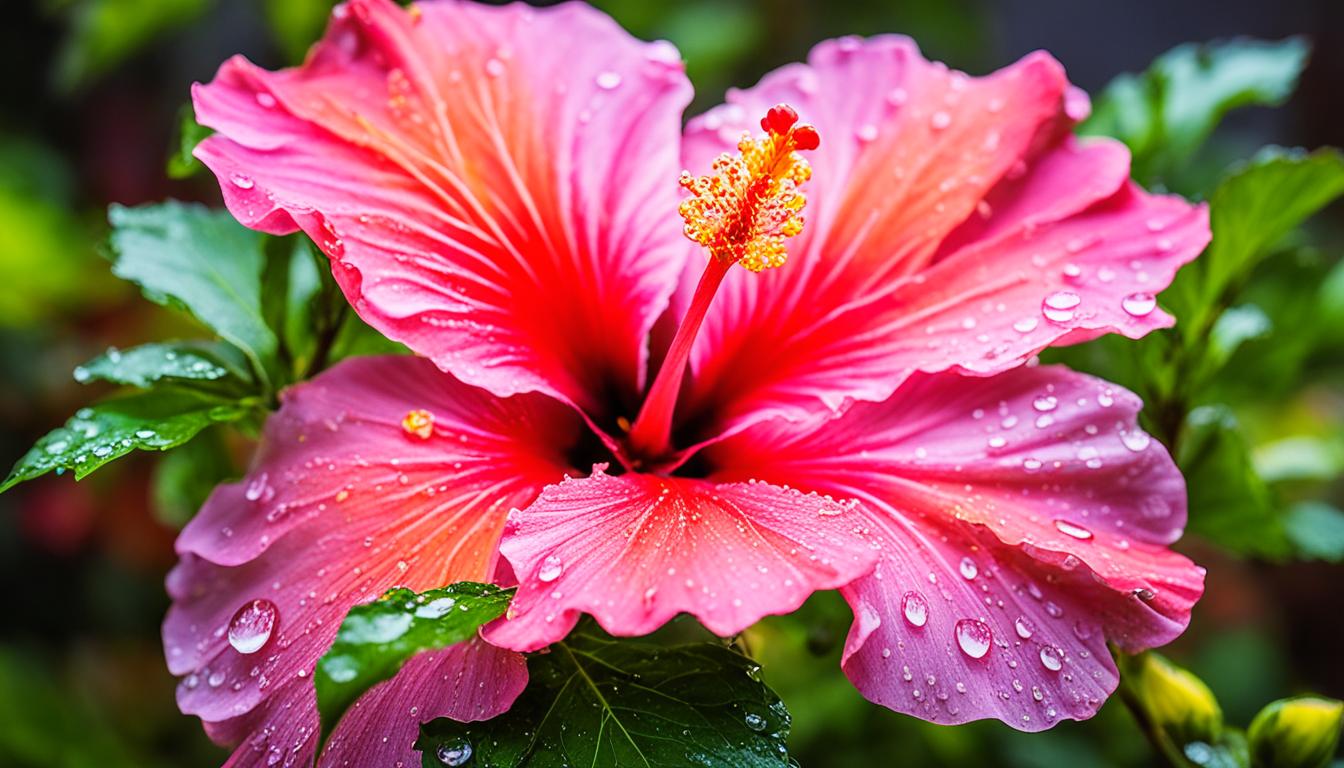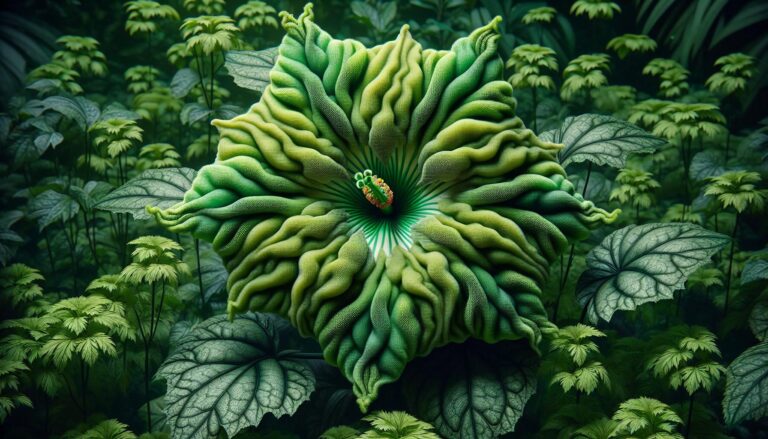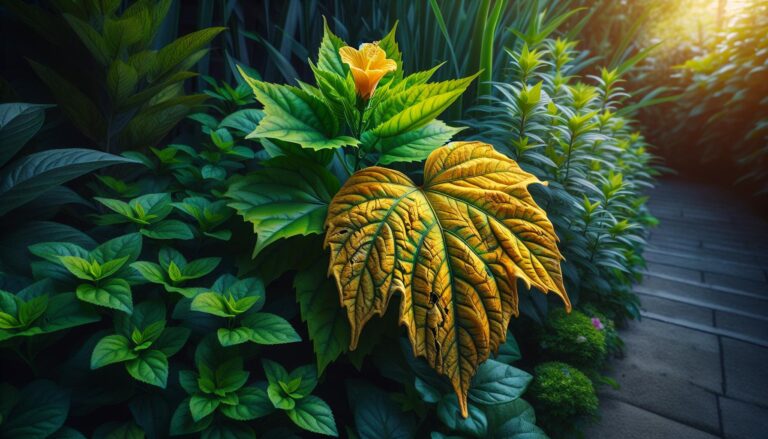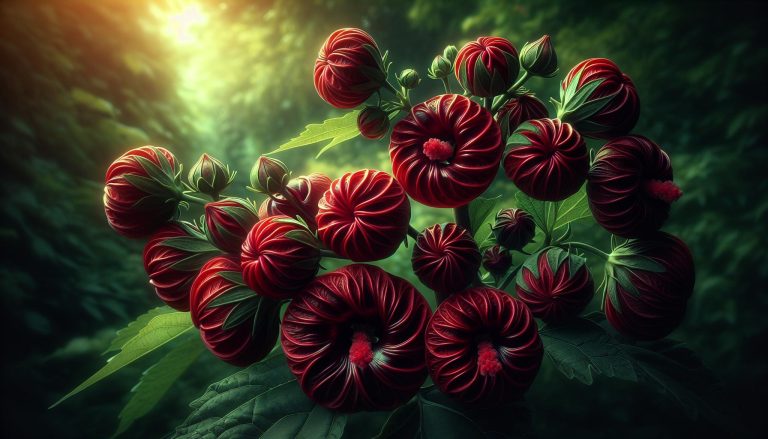Florida Hibiscus Care Guide – Easy Tips & Tricks
Imagine waking up every morning to the vibrant, tropical beauty of hibiscus flowers right in your own backyard. Their stunning blooms and lush foliage brighten up even the hottest Florida days, creating a little piece of paradise right at home.
But caring for hibiscus plants in Florida can sometimes be a challenge. With scorching temperatures and intense humidity, it’s important to know the right techniques to keep these beauties thriving.
In this Florida Hibiscus Care Guide, we’ll take you through everything you need to know about caring for hibiscus plants in the Sunshine State. From choosing the right soil to providing the perfect amount of sunlight, we’ll arm you with the tips and tricks you need to create a stunning hibiscus display that can withstand even the hottest climates.
So let’s dive in and unlock the secrets to successful hibiscus care in Florida!
Key Takeaways:
- Discover easy tips and tricks for caring for hibiscus plants in Florida
- Learn how to choose the right soil and provide the proper sunlight
- Understand the watering needs and pruning techniques for hibiscus plants
- Explore container and indoor care options for hibiscus in Florida
- Find out the recommended hibiscus varieties that thrive in the Florida climate
Choosing the Right Soil for Hibiscus Plants
Optimal Soil Conditions for Hibiscus
Hibiscus plants require well-drained soil to thrive in Florida. It’s essential to provide them with the right soil conditions to ensure their health and vibrant growth. Hibiscus care in Florida starts with choosing the appropriate potting mix or amending your garden soil with compost.
Potting Mix for Hibiscus Flowers
When growing hibiscus in containers, it’s recommended to use a potting mix specifically formulated for flowering plants or hibiscus. These mixes are well-draining and provide the necessary nutrients for optimal plant growth. The soil should be light and airy, allowing excess water to flow through and preventing root rot.
Amending Garden Soil for Hibiscus
If you plan to plant hibiscus flowers directly in your garden, amend the soil with organic matter like compost or well-rotted manure. Adding organic matter improves soil drainage, moisture retention, and nutrient availability. By creating a loamy soil texture, you create an ideal environment for hibiscus plants to thrive.
Soil pH for Hibiscus
The pH level of the soil plays a crucial role in hibiscus plant care in Florida. Aim for a soil pH between 5.8 and 6.5, which is slightly acidic. You can test the soil pH using a soil testing kit or consult a local garden center for assistance. Adjust the pH by adding soil amendments or products recommended for acid-loving plants.
Fertilizing Hibiscus Plants
Fertilization is an important part of Florida hibiscus care tips. To ensure adequate nutrition, fertilize your hibiscus plants every two weeks during the growing season with either liquid or slow-release fertilizer. Choose a balanced fertilizer with equal parts nitrogen, phosphorus, and potassium, along with essential trace elements. This regular feeding promotes healthy foliage growth and vibrant blooms.
| Tip | Description |
|---|---|
| 1 | Use a potting mix designed specifically for hibiscus when growing them in containers. |
| 2 | If planting hibiscus in the ground, amend the soil with organic matter to improve drainage and nutrient availability. |
| 3 | Achieve a slightly acidic soil pH between 5.8 and 6.5, ideal for hibiscus plants. |
| 4 | Fertilize hibiscus plants every two weeks with a balanced fertilizer to promote healthy growth and abundant blooms. |
| 5 | Mulch the soil around hibiscus plants to help retain moisture and suppress weeds. |

Providing the Right Sunlight for Hibiscus Plants
Hibiscus plants love basking in the warmth of full sunlight, soaking up its energy for vibrant growth and abundant blooming. However, in Florida’s hot climate, it’s important to consider the intense heat and provide some shade during the hottest parts of the day to prevent sunburn and dehydration of the plants.
When planting hibiscus in the ground, make sure to choose a location that receives ample sunlight for most of the day. It’s best to plant hibiscus deep enough in the soil so that the stems are level with the surface. This ensures stability and prevents the plant from toppling over in strong winds or heavy rainfall.
If you prefer to grow hibiscus in containers, make sure the pots have good drainage to prevent waterlogging. Place the containers in a spot that gets plenty of sunlight throughout the day. Keep in mind that hibiscus plants may require more frequent watering when grown in containers due to faster moisture evaporation.
If you decide to bring hibiscus plants indoors, choose a bright and sunny location near a window that receives direct sunlight. The more sunlight the plant gets, the better it will thrive. Additionally, provide optimal humidity by placing a tray filled with water and pebbles beneath the pot to create a humid microclimate.
Remember, while hibiscus plants adore sunlight, they still need protection from scorching heat in Florida’s intense climate. Find the right balance between sun exposure and shade to ensure your hibiscus plants flourish and dazzle with their stunning blooms.
Watering Hibiscus Plants in Florida
Proper watering is essential for hibiscus plants in Florida. By understanding their unique water needs, you can ensure the health and vibrancy of your hibiscus flowers.
Watering Schedule
When it comes to watering your hibiscus plants, it’s important to strike the right balance. During the first few weeks after planting, water your hibiscus thoroughly every couple of days to help establish their root system. This initial period is crucial for their growth and development.
In the following year, adjust your watering routine to twice per week, ensuring that the soil is adequately moist to support healthy growth. In subsequent years, water your hibiscus plants once per week, unless there are exceptionally dry conditions or signs of water stress.
Avoid Overwatering
While it’s crucial to provide sufficient moisture, it’s equally important to avoid overwatering your hibiscus plants. Overwatering can lead to root rot and other issues that can hinder their overall health.
To determine when it’s time to water, check the soil moisture level with your finger. If the top inch of soil feels dry, it’s a good indication that your hibiscus plants need watering. However, if the soil feels moist or clumpy, hold off on watering until it dries out slightly.
Additional Tips
Mulching around your hibiscus plants can help retain soil moisture and regulate temperature, protecting the roots from extreme heat or cold. Apply a layer of organic mulch, such as wood chips or shredded bark, around the base of the plants, leaving a small gap around the stems to prevent moisture-related diseases.
Remember to adjust your watering routine based on the specific needs of your hibiscus variety, local weather conditions, and the type of soil you have. Pay attention to any signs of distress, such as drooping leaves, and adjust your watering accordingly.
By following these watering guidelines and understanding the water requirements of your hibiscus plants, you can help them thrive and enjoy their stunning blooms for years to come.
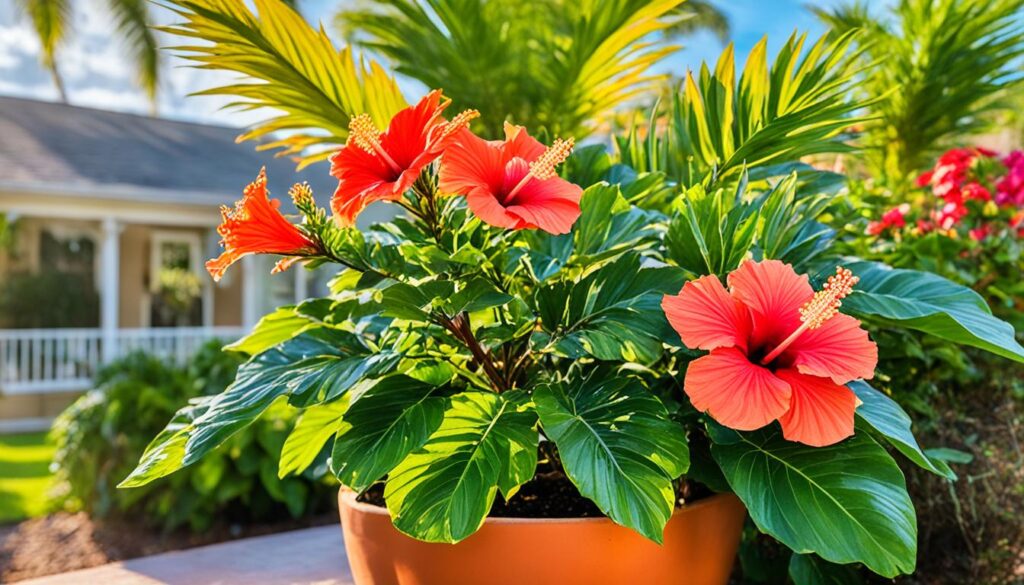
Growing Hibiscus in Containers
Growing hibiscus in containers is a convenient option for Florida gardeners who want to enjoy the beauty of these vibrant flowers while having the flexibility to move them around. Here are some essential tips for successfully growing hibiscus in containers.
Choosing the Right Container
When selecting a container for your hibiscus plant, opt for medium-sized containers that provide enough room for the plant’s roots to grow. It’s important not to choose containers that are too large, as hibiscus plants prefer to be slightly rootbound. Choose a container with good drainage holes to prevent waterlogging, as excess moisture can lead to root rot.
Using the Right Potting Mix
Hibiscus plants thrive in well-drained soil, so it’s essential to use a high-quality potting mix that provides good aeration and drainage. Look for a potting mix specifically formulated for container gardening or hibiscus plants. Adding organic matter, such as compost or coconut coir, can help improve the soil structure and provide necessary nutrients.
Maintaining Proper Watering and Fertilization
Proper watering is crucial for the health and vibrancy of your potted hibiscus. Water the plant thoroughly whenever the top inch of soil feels dry to the touch, but avoid overwatering. It’s best to allow the soil to slightly dry out between waterings to prevent the risk of root rot. Additionally, fertilize your hibiscus regularly with a balanced slow-release fertilizer or a water-soluble fertilizer according to the package instructions to promote healthy growth and vibrant blooms.
Providing Adequate Sunlight
Hibiscus plants love sunlight, so place your container in an area that receives at least six hours of direct sunlight each day. If you live in a particularly hot region of Florida, you may want to provide some shade during the hottest parts of the day to prevent the leaves from scorching. Consider placing your hibiscus container near a sunny window or in a sunny spot on your patio or balcony.
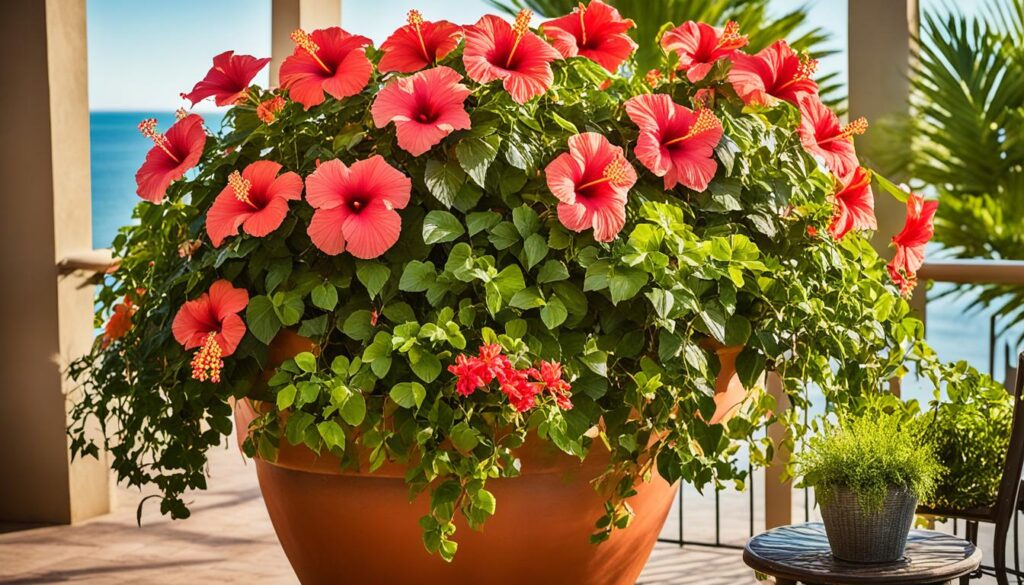
Winter Care for Container-Grown Hibiscus
During winter, Florida may experience occasional cold spells that can damage or even kill hibiscus plants. To protect your container-grown hibiscus during the winter months, bring them indoors to a warm location with sufficient sunlight. Reduce watering frequency, as the plants enter a dormant period, and resume regular watering once warmer temperatures return. Monitor the plants for any signs of pests or diseases and take appropriate action if needed.
By following these tips, you can enjoy the beauty of hibiscus flowers in containers throughout the year, adding a vibrant touch to your garden or outdoor space.
Indoor Care for Hibiscus Plants
Hibiscus plants can thrive indoors, allowing you to enjoy their vibrant blooms and tropical beauty right inside your home in Florida. By following some simple care tips, you can create an optimal environment for your indoor hibiscus plants to flourish.
Placement and Lighting
When selecting a spot for your indoor hibiscus, choose a location that receives ample sunlight. Place the plant near a window that provides bright, indirect light for at least six hours a day. Avoid placing the hibiscus plant in direct sunlight, as it can scorch the leaves.
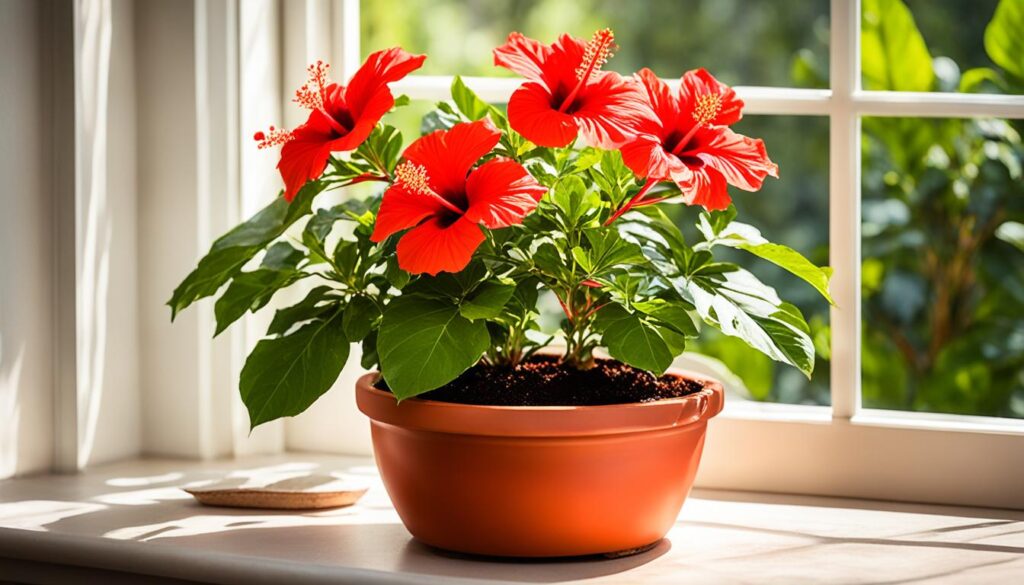
Optimal humidity is crucial for indoor hibiscus plants. Consider using a humidifier or placing a tray of water near the plant to increase humidity levels. You can also mist the leaves of the hibiscus plant occasionally to provide a humid environment.
Watering and Feeding
Proper watering is essential to keep your indoor hibiscus plant healthy. Water the plant when the top inch of the soil feels dry to the touch. Be careful not to overwater, as hibiscus plants are susceptible to root rot. Empty any excess water from the saucer beneath the pot to prevent waterlogged roots.
During the growing season, feed your indoor hibiscus plants with a balanced, water-soluble fertilizer. Follow the manufacturer’s instructions for the recommended dosage and frequency of application. Fertilize the plant every two to four weeks to provide the necessary nutrients for healthy growth and blooming.
Pruning and Shaping
To maintain the shape and promote bushier growth, prune and shape your indoor hibiscus plant regularly. Use clean pruning shears to remove any dead or damaged branches. You can also pinch off the tips of the branches to encourage branching and more prolific blooming.
Trimming your indoor hibiscus plant can also help control its size and prevent it from becoming too leggy. Pruning stimulates new growth and ensures a fuller, more compact plant.
Consider bringing your indoor hibiscus plants outdoors once the temperatures in Florida rise. Acclimatize the plant gradually to outdoor conditions by placing it in a shaded area for a few hours each day. This will help the plant adjust to the brighter sunlight and increase its chances of thriving outdoors.
Pruning and Propagation of Hibiscus Plants
Proper pruning is essential for maintaining the shape and promoting vigorous blooming in hibiscus plants. While the timing of pruning may vary depending on the specific hibiscus variety, the general recommendation is to prune in the fall or spring. Pruning helps remove dead or damaged branches, encourages new growth, and allows for better air circulation within the plant.
There are a few key steps to follow when pruning hibiscus plants:
- Inspect the plant: Before pruning, thoroughly inspect the hibiscus plant for any signs of disease or pests. It’s important to address any issues before proceeding with pruning.
- Prepare your tools: Make sure to use clean and sharp pruning shears or scissors. This ensures a clean cut and minimizes the risk of damaging the plant.
- Remove dead or damaged branches: Begin by removing any dead or damaged branches. Cut them back to healthy growth, making the cut just above a node or bud.
- Shape the plant: To maintain the desired shape, selectively prune branches to achieve the desired form. Focus on removing any overcrowded or crossing branches.
- Promote blooming: Pruning can help stimulate blooming in hibiscus plants. Trim back branches after they have finished flowering to encourage new growth and more blooms.
Propagation is another way to expand your hibiscus garden. One of the most common methods of propagation is through cuttings. Here’s a step-by-step guide:
- Choose the right cuttings: Select soft-stem cuttings from healthy, disease-free hibiscus plants. Cuttings should be about 6 inches long, taken from the top portion of the plant.
- Prepare the cuttings: Remove any leaves from the lower half of the cutting. Dip the cut end in rooting hormone to promote root development.
- Plant the cuttings: Insert the cuttings into a well-draining soil mix, ensuring that at least one or two leaf nodes are covered with soil. Water the cuttings thoroughly.
- Provide the right conditions: Place the cuttings in a warm and humid environment, ideally under a plastic cover or inside a propagator. Keep the soil consistently moist but not waterlogged.
- Care for the cuttings: Monitor the cuttings regularly and mist them if the humidity drops. Avoid overwatering to prevent rotting. Once the cuttings develop roots, they can be transplanted into larger pots or the garden.
Overwintering Hibiscus Plants in Florida
In colder parts of Florida, it may be necessary to protect hibiscus plants during the winter months. Hibiscus plants are sensitive to frost and cold temperatures, so taking precautions can help ensure their survival and keep them thriving for the next blooming season.
If you have potted hibiscus plants, the easiest way to protect them is to bring them indoors to a warm location with indirect light. Find a spot near a window where they can still receive some sunlight but won’t be exposed to chilly drafts. Consider using a plant stand or saucer with rocks and water to provide humidity for your hibiscus plants.
During the winter months, hibiscus plants go through a dormant period where they require less water. Reduce watering frequency, allowing the soil to dry out slightly between waterings. Be cautious not to overwater, as this can lead to root rot.
If you have hibiscus plants growing in the ground, covering them with a layer of mulch can help insulate the roots and protect them from freezing temperatures. Spread a thick layer of mulch around the base of the plants, extending it outwards to cover the entire root zone. This will help retain soil warmth and prevent temperature fluctuations.
While hibiscus plants are generally hardy, it’s essential to monitor them for any signs of pests or diseases during the winter months. Inspect the leaves and stems regularly for any abnormalities or infestations. If necessary, treat the plants with appropriate insecticides or fungicides to prevent any further damage.
With proper care and protection, your hibiscus plants can survive the winter months in Florida and emerge vibrant and healthy for the next growing season. Remember to gradually acclimate them to outdoor conditions once the temperatures begin to rise, and resume regular care practices.
Recommended Hibiscus Varieties for Florida
If you’re looking to add some vibrant blooms to your Florida garden, consider these recommended hibiscus varieties. Each of these varieties thrives in Florida’s climate, making them a perfect choice for your outdoor space. Let’s take a look at some popular options:
Hibiscus rosa-sinensis ‘Bonjour’
The ‘Bonjour’ hibiscus variety is known for its stunning, large-sized flowers that come in vibrant shades of red, pink, and orange. This variety blooms prolifically throughout the year and adds a pop of color to any garden. ‘Bonjour’ hibiscus plants require regular watering and full sunlight to thrive, making them a great choice for Florida gardens.
Hibiscus rosa-sinensis ‘Magic Moment’
‘Magic Moment’ hibiscus is a versatile variety that features double blooms in shades of yellow, orange, and pink. This eye-catching variety adds a touch of tropical elegance to any garden setting. ‘Magic Moment’ hibiscus plants prefer well-drained soil and partial shade to full sunlight, making them suitable for Florida’s climate.
Hibiscus rosa-sinensis ‘Cajun Cocktail’
The ‘Cajun Cocktail’ hibiscus variety stands out with its unique, multi-colored blooms. Each flower features a combination of red, orange, and yellow, creating a stunning display of rich, tropical hues. ‘Cajun Cocktail’ hibiscus plants thrive in full sunlight and well-drained soil, making them an excellent choice for Florida gardens.
No matter which hibiscus variety you choose for your Florida garden, you can enjoy vibrant, show-stopping blooms that add beauty and tropical vibes to your outdoor space. Experiment with different varieties and create a stunning hibiscus display that thrives in Florida’s climate.
Conclusion
Now that you have all the essential information on hibiscus care in Florida, you can confidently nurture these stunning plants in your garden or indoor space. Remember to provide the right soil conditions, ample sunlight, and proper watering for your hibiscus plants to flourish. By following the tips and tricks shared in our Florida Hibiscus Care Guide, you’ll create a vibrant hibiscus display that adds a touch of tropical beauty to your surroundings.
Don’t be afraid to experiment with different hibiscus varieties and care techniques to find what works best for you. With a bit of attention and care, your hibiscus plants will reward you with their beautiful blooms and lush foliage, enhancing the overall aesthetic of your space. Whether you choose to grow them in containers or in the ground, hibiscus plants are sure to bring joy and color to your Florida garden.
So, get ready to enjoy the mesmerizing beauty of hibiscus flowers in your own backyard. Explore the wide variety of hibiscus plants available and unleash your creative gardening skills. With proper care and a little bit of patience, your hibiscus display will thrive and become a source of pride for years to come.

